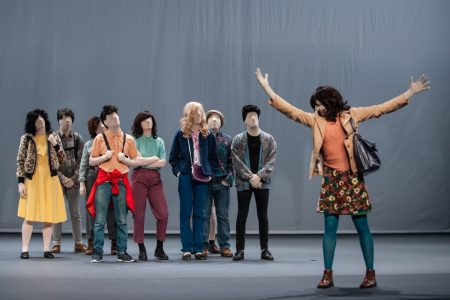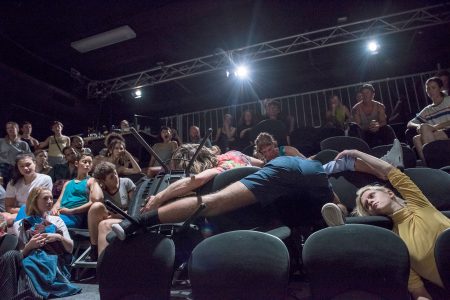John Berger, the art critic who renewed our ‘ways of seeing’, once remarked, ‘Like God, the viewer is unseen.’ If performing arts and dance evolved around our gaze, and its power to behold and to objectify, what happens when that gaze is questioned? After all, dance broke the proscenium arch long ago, bringing performers and audience closer, questioning our ways of seeing, and suggesting a total sensory immersion or even audience participation in the staged action. As we are introduced to a plurality of visions on stage, we need once again to reconfigure the position of the one who sees. Is that still God-like?
Here’s an example: picture – yes, again, image prevails – five dancers with vividly coloured costumes, performing, in slow motion, a sequence of movements on a bright pink carpet. The audience is seated around the periphery. Those familiar with Maria Hassabi’s work may have already got the picture: the sculptural presence of the bodies, the unfamiliar sense of being physically close to a staged performance, yet faintly detached. In Staged, Hassabi and her performers are more than physically engaged with the slow rhythm of the movement: their unnatural pace suggests an altered state of consciousness, inviting us also to alter our perception of the performed movement. We tend to ‘see’ movement as an infinity of variations in time and space, abrupt changes of rhythm, drastic shifts between areas of focus. However, in Hassabi’s work, the notion of time is so expanded and the space so limited – the dancers barely shift on stage, their bodies surrender to gravity, creating a palpable density in the choreographed action – that we ask ourselves: what is there to see?









